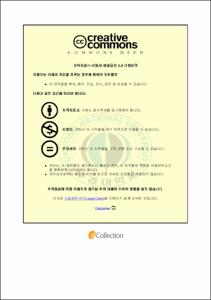중학교 1학년 영어교과서의 문화적 내용 분석
- Alternative Title
- An analysis of the cultural contents in the first grade middle school English textbooks : Based on the Revised Curriculum
- Abstract
- The purpose of this study is to analyze the cultural contents in the first grade of middle school English textbooks written according to the revised National Curriculum. By analyzing the revised textbooks, we can find cultural understanding guidelines and be helped to select proper textbooks.
To perform this study, the cultural contents in six textbooks are analyzed according to two categories-Cultural types and Cultural backgrounds.
Cultural types are divided into three subcategories: behavioral culture, spiritual culture, material culture.
Cultural backgrounds are divided into five subcategories: Korean background, universal cultural background, British/American cultural background, contrastive cultural background, the cultural background of non-English speaking countries.
The results of this study are as follows:
First, the analysis of cultural types shows that the content of behavioral culture is relatively higher than other cultural types. This result seems to be desirable for students in the early stage of learning English.
However since it causes an imbalances between cultural contents, it is recommended that other cultural types should be introduced evenly in textbooks to improve students' understanding of target culture.
Second, the analysis of cultural backgrounds shows that the universal cultural background makes up 44.9% of the total content in textbooks. This high emphasis on universal cultural background can contribute to learning English effectively in the context of EIL(English as an International Language).
Nevertheless it is unnecessary for teachers to explain cultures to students which are already known to them. With this in mind, the ratio of the universal cultural background should be decreased.
Third, British/American cultural background makes up 8.9% of the content of cultural backgrounds. Considering our target language is English, the ratio is very low. And although the revised National Curriculum guidelines emphasize non-English speaking countries culture, the cultural background of non-English speaking countries make up only 8.7%. So these two cultural backgrounds must appear more often in textbooks.
In conclusion, this study claims that it is important for students to recognize and understand diverse cultural differences for successful communication. Therefore the textbooks of the revised National Curriculum need to contain various kinds of cultural contents to give students effective ways of cultural education.
- Issued Date
- 2011
- Awarded Date
- 2011. 2
- Type
- Dissertation
- Publisher
- 부경대학교
- Department
- 교육대학원 영어교육전공
- Advisor
- 윤희수
- Table Of Contents
- I. 서론 1
1. 연구의 필요성 및 목적 1
2. 연구과제 및 개요 4
3. 연구의 제한점 5
II. 이론적 배경 6
1. 문화의 개념 6
2. 문화와 언어와의 관계 8
3. 문화교육의 중요성 9
4. 문화교육과 교육과정 11
III. 연구방법 21
1. 연구대상 21
2. 분석기준 및 분석방법 24
IV. 결과 분석 및 논의 28
1. 문화 유형별 분석결과 28
2. 문화 배경별 분석결과 48
3. 효과적인 문화교육을 위한 현행 영어 교과서에서 개선해야 할 점 69
V. 결론 및 제언 73
참고문헌 76
- Degree
- Master
- Files in This Item:
-
-
Download
 중학교 1학년 영어교과서의 문화적 내용 분석.pdf
기타 데이터 / 1.05 MB / Adobe PDF
중학교 1학년 영어교과서의 문화적 내용 분석.pdf
기타 데이터 / 1.05 MB / Adobe PDF
-
Items in Repository are protected by copyright, with all rights reserved, unless otherwise indicated.